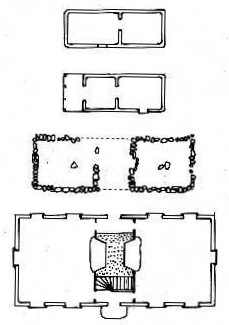Newlon, Cara. "The College Amenities Arms Race." Forbes. Forbes Magazine, 31 July 2014. Web. 02 Feb. 2017.
In this article, Newlon describes the luxuries that modern colleges have become accustom to possess. Newlon provides specific comparisons to American colleges from the 20th century adjacent to the 21st century. Newlon further points out how some of the modernized college luxuries provide benefits for colleges and students overall.
Newlon's article discloses numerical data which demonstrates increasing costs of modernized college luxuries in America. Newlon also points out the expansion of college enrollment over a 10 year span (par. 4). The author suggests the idea of colleges having luxuries helps to generate more capital for the college (par. 10).
Each of the readings focused on college campuses, but had contrasting ideas on how its surrounding locations affect academia and the college essentially. The primary reading focuses on how the incorporation of natural outdoor spaces and landscapes can positively contribute to a students learning process. College campuses in cities more likely pose an issue with this integration because cities are usually over crowded with businesses, people, buildings, etc. (Scholl et al., 2015 par. 4). With all of these growing circumstances, it becomes more difficult for surrounding locations and landscapes to remain in its natural form, eventually alterations to natural areas can occur benefitting businesses and consumers. Colleges that are located near small-town/suburban area could stand a better chance of fusing together natural surroundings into academia due to fewer distractions. However, it ultimately depends on the persons individual ability to focus and learn (Scholl et al., 2015 par. 11)
The supplementary reading alludes to the benefits that added luxuries can provide for colleges. Luxuries such as, movie theaters, spas, arcades, ice rinks, etc., will attract more people and even business which allows for growing enrollment at colleges that provide such amenities. This also produces more assets for the college through businesses. Although colleges allow students to access these luxuries, ultimately it is the college that is able to capitalize on this (par. 10). In the long run, these added luxuries don't directly provide a higher quality of academia for students opposed to higher standards of living solely, but it does improve the prominence of the college resulting in more recognition, interest, and capital.
Scholl, Kathleen G., and Gowri B. Gulwadi. "Recognizing Campus Landscapes as Learning Spaces | Scholl | Journal of Learning Spaces." Recognizing Campus Landscapes as Learning Spaces | Scholl | Journal of Learning Spaces. N.p., 2015. Web. 22 Feb. 2017.





